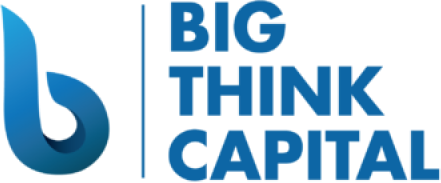Have you ever had to turn down a huge opportunity because you lacked the upfront cash to make it happen? It’s one of the most frustrating positions for a business owner to be in. You have the sales and the demand, but your working capital is tied up in outstanding invoices. This is where receivable financing becomes a powerful tool for growth. It allows you to leverage the money your customers already owe you to fund new projects, purchase inventory, or hire staff. Instead of letting slow payments dictate your pace, you can take control of your cash flow. To do that, you first need to understand your options. This guide breaks down the 4 forms of receivable financing so you can choose the right one to fuel your expansion.
Key Takeaways
- Turn Your Invoices into Immediate Cash: Receivable financing lets you access the money your customers already owe you, providing the working capital to run your business without waiting on long payment cycles.
- Choose the Right Level of Control: Decide whether you want a financing partner to handle collections (factoring) or prefer a confidential option where you maintain your customer relationships (discounting or AR loans).
- Qualify Based on Your Customers’ Strength: Unlike traditional loans that focus on your credit history, receivable financing approval often depends on the creditworthiness of your clients, making it more accessible for growing businesses.
What is Receivable Financing?
If you run a business that invoices clients, you know the drill. You do the work, send the invoice, and then… you wait. Waiting 30, 60, or even 90 days for payment can put a serious strain on your cash flow, making it tough to cover payroll, buy inventory, or jump on new opportunities. This is where receivable financing comes in.
Think of it as a way to get an advance on the money your customers already owe you. Instead of waiting for your clients to pay, you can partner with a financing company to get a large portion of that cash right away. It’s not a traditional loan that adds debt to your balance sheet. Instead, you’re leveraging an asset you already own—your unpaid invoices, also known as accounts receivable. This process turns your outstanding invoices into immediate working capital, giving you the funds you need to run and grow your business without the long wait. It’s a straightforward solution designed to smooth out the unpredictable highs and lows of your cash flow cycle.
How Does Receivable Financing Work?
The process is simpler than you might think. It starts after you’ve delivered your product or service and invoiced your customer. You then submit your unpaid invoices to a financing company. The company reviews the invoices and the creditworthiness of your customers to assess the likelihood of payment.
Once approved, they’ll advance you a significant percentage of the invoice’s value—often up to 80% or 90%—within a few days. You get the cash you need without the wait. The financing company then typically handles collecting the payment from your customer. After your customer pays the invoice in full, the financing company sends you the remaining balance, minus their fee. It’s a clean process that gets cash in your hands fast.
Why Use Receivable Financing?
The number one reason businesses turn to receivable financing is to solve cash flow problems. When you have a gap between completing work and getting paid, it can be difficult to manage daily expenses, let alone plan for growth. Receivable financing closes that gap.
With immediate access to funds, you can confidently cover payroll, pay suppliers on time, and invest in new equipment or marketing campaigns. It allows you to say “yes” to larger projects you might otherwise have to turn down due to a lack of upfront capital. Essentially, it gives your business the stability and liquidity it needs to operate smoothly and seize opportunities as they arise, turning your unpaid invoices from a waiting game into a reliable source of cash.
Common Myths, Busted
Many business owners think receivable financing is only for large corporations or companies in financial trouble, but that’s simply not true. It’s a smart financial tool used by successful small and mid-sized businesses across many industries to manage their cash flow effectively. It’s not a last resort; it’s a strategic move to ensure financial stability and fuel growth.
Another common misconception is that you’ll lose control over your business or have to finance every single invoice. Modern accounts receivable financing is designed to be flexible. You can often choose which invoices you want to finance, giving you control over the process. It’s a scalable solution that can adapt to your business’s changing needs, providing financial flexibility without locking you into a rigid contract.
What is Invoice Factoring?
If you’ve ever felt the frustration of waiting 30, 60, or even 90 days for a customer to pay an invoice, you already understand the cash flow challenge that invoice factoring is designed to solve. At its core, invoice factoring is a type of accounts receivable financing where you sell your outstanding invoices to a third-party company, known as a “factor,” at a discount. Instead of waiting weeks or months for your customer to pay, you get a large portion of that cash almost immediately.
Think of it as a cash advance on the money you’re already owed. The factoring company pays you upfront, then takes on the responsibility of collecting the full payment from your customer. Once your customer pays the factor, the factor sends you the remaining balance of the invoice, minus their service fee. This can be a powerful tool for businesses with reliable customers but slow payment cycles, helping you cover payroll, buy inventory, or seize a new opportunity without delay. It’s less about taking on new debt and more about speeding up your existing revenue stream.
The Factoring Process, Step-by-Step
The mechanics of invoice factoring are pretty straightforward. While every factoring company has its own specific process, it generally follows these key steps:
- You do the work: You provide your goods or services to your customer and send them an invoice as you normally would.
- You sell the invoice: You submit the unpaid invoice to a factoring company for verification.
- You get an advance: The factor advances you a large percentage of the invoice’s value, typically between 70% and 90%, often within a few business days.
- The factor collects payment: The factoring company takes over and collects the full payment directly from your customer.
- You get the rest: Once the invoice is paid, the factor sends you the remaining balance, minus their agreed-upon fee.
Understanding the Costs and Terms
So, how do factoring companies make money? They charge a service fee, often called a “factoring fee” or “discount rate.” This isn’t an interest rate like you’d see with a traditional loan. Instead, it’s a percentage of the invoice’s total value, typically ranging from 1% to 5%.
The exact fee you’ll pay depends on several factors, including your industry, the total value of your invoices, and, most importantly, the creditworthiness of your customers. Since the factor is the one collecting from your customers, their risk is tied to your customers’ reliability. A client with a long history of paying on time will usually result in a lower fee for you.
Who Manages Your Customer Relationships?
This is a critical point to understand before you start. With invoice factoring, the factoring company takes over the collections for the invoices you sell. This means your customers will pay the factor directly, not you. The factor will communicate with your customers to ensure the invoice is paid on time.
For some business owners, handing over this communication is a huge relief—no more chasing down late payments. For others, it can feel like a loss of control. It’s important to partner with a reputable factoring company that handles customer interactions professionally. You want a partner who will represent your brand well and maintain the positive relationships you’ve worked hard to build.
Key Pros and Cons
Invoice factoring can be a game-changer for managing cash flow, but it’s smart to weigh both sides.
Pros:
- Fast Funding: You get access to cash tied up in your invoices almost immediately.
- No Debt: You’re not taking out a loan; you’re simply getting an advance on money you’ve already earned.
- Easier Qualification: Approval is often based on your customers’ credit history, not yours, making it accessible for new or growing businesses.
- Outsourced Collections: You can save time and administrative headaches by letting the factor handle collections.
Cons:
- Higher Cost: Factoring fees can sometimes be higher than the interest on a traditional business line of credit.
- Customer Communication: You give up direct control over payment collection, which could impact customer relationships if not handled well.
- Not for Every Business: It works best for B2B companies with reliable, creditworthy customers.
What is Invoice Discounting?
Think of invoice discounting as a confidential cash advance on your outstanding invoices. It’s a popular form of receivables financing that gives you immediate access to the cash you’ve already earned, freeing you from the stress of waiting on slow-paying clients. If you have a solid track record of customers who pay on time but your cash flow is feeling the squeeze from 30-, 60-, or 90-day payment terms, this could be a great fit.
The key difference between invoice discounting and its cousin, invoice factoring, is control. With discounting, you remain in the driver’s seat of your customer relationships. You still send the payment reminders and manage your own collections process, so your clients never need to know you’re using a financing partner. It’s a discreet way to bridge revenue gaps and keep your operations running smoothly without disrupting the valuable rapport you’ve built with your customers. Let’s walk through exactly how it works.
How the Discounting Process Works
The process for invoice discounting is refreshingly straightforward. First, you submit your unpaid invoices to a finance company. They’ll review them and provide a cash advance, which is typically a high percentage of the total invoice value—often up to 90%. You can usually expect to see this cash in your account within a few days.
From there, it’s business as usual. You continue to manage your sales ledger and collect payments directly from your customers according to your existing terms. Once your customer pays the invoice in full, you simply repay the finance company the original advance plus their agreed-upon fee. This form of accounts receivable financing lets you get paid faster while you maintain full control over your customer interactions.
What Are the Costs?
When you use invoice discounting, the finance company charges a fee for the service. This fee is the primary cost of the arrangement and is usually calculated as a small percentage of the invoice’s value. Think of it as the price for getting your cash immediately instead of waiting weeks or months.
The exact fee can vary based on a few factors. The lender will consider the volume and value of your invoices, the creditworthiness of your customers, and the length of your payment terms. A higher risk associated with your invoices might lead to a slightly higher fee. It’s important to get a clear breakdown of all costs from your financing partner so you can accurately weigh them against the benefit of improved cash flow for your business.
Will Your Customers Know?
For most business owners, this is the most important question, and the answer is usually no. Invoice discounting is designed to be a confidential arrangement between you and the finance company. Your customers will continue to send their payments directly to you, just as they always have. They won’t receive any communication from the finance company, and your invoices won’t indicate that a third party is involved.
This confidentiality is a major advantage, as it allows you to secure the funding you need without affecting your customer relationships. You’ve worked hard to build trust with your clients, and this financing method respects that. The entire process happens behind the scenes, giving you a seamless way to manage your cash flow privately.
Key Benefits and Drawbacks
Like any financial tool, invoice discounting has its pros and cons. The biggest benefit is the immediate improvement to your cash flow, giving you the working capital to cover expenses and seize growth opportunities. You also get to maintain full control over your customer relationships and collections process, which is a huge plus for many businesses. Plus, it offers flexibility, as you can often choose which invoices to finance.
On the other hand, the primary drawback is the cost. The fees are typically higher than those for a traditional bank loan. Another key consideration is risk. Since you are still responsible for collecting payment, you’re on the hook for the advance if your customer fails to pay their invoice. It’s essential to weigh these factors to decide if it’s the right move for your company.
What is an Accounts Receivable Loan?
If you have a stack of unpaid invoices and need cash now, an accounts receivable loan might be the right move. Think of it as a way to borrow against the money your customers already owe you. Instead of waiting 30, 60, or 90 days for payments to roll in, you can use those invoices as collateral to secure a loan and get funds quickly. This type of financing is a powerful tool for managing cash flow gaps, especially for B2B businesses that operate on credit terms.
Unlike invoice factoring, where you sell your invoices to a third party, an accounts receivable loan keeps you in control. You’re still responsible for collecting payments from your customers, and your relationship with them remains unchanged. The lender simply provides you with a loan based on the value of your receivables, giving you the working capital you need to cover payroll, purchase inventory, or seize a new growth opportunity. It’s a straightforward way to turn your future revenue into present-day cash without disrupting your customer relationships.
Loan Terms and What to Expect
When you take out an accounts receivable loan, you’re essentially using your customer invoices as a guarantee. A lender will assess the value of your outstanding invoices and typically advance you a percentage of that total amount, often up to 80% or more. For example, if you have $100,000 in reliable receivables, you might get a loan for $80,000.
A key thing to remember is that you retain ownership of your invoices. This means you are still in charge of the collections process and maintaining your customer relationships. Once your customers pay their invoices, you use that money to repay the loan, plus any interest and fees. It’s a simple arrangement that lets you leverage your assets without selling them off.
A Look at Interest Rates and Fees
It’s important to go in with a clear understanding of the costs. The interest rates and fees for accounts receivable loans can sometimes be higher than those for traditional bank loans. This is because the lender’s risk is tied to your customers’ ability to pay on time, not just your business’s overall credit profile.
The cost is often a trade-off for the speed and accessibility this financing provides. While a traditional loan might take weeks or months to approve, you can often get an accounts receivable loan funded in just a few days. For many business owners, the immediate access to working capital is well worth the extra cost, as it allows them to avoid missed opportunities or a cash flow crunch.
How to Qualify
Qualifying for an accounts receivable loan is less about your personal credit score and more about the quality of your invoices. Lenders are most interested in the creditworthiness of your customers. If you have a history of working with reliable clients who pay their bills on time, your chances of approval are much higher. The strength of your receivables directly impacts how easy it is to get funded and can even influence your interest rate.
To prepare, make sure your invoicing and bookkeeping are organized. Lenders will want to see clear records of your accounts receivable aging, customer payment histories, and billing policies. Having this information ready will streamline the application and show that you have a solid handle on your finances.
Key Pros and Cons
The biggest advantage of an accounts receivable loan is the immediate injection of cash into your business. When you can’t afford to wait for customer payments, this type of financing closes the gap, with funds often available in just a day or two. You also maintain control over your sales ledger and customer communications, which is a huge plus for preserving your business relationships.
On the flip side, there is some risk involved. Because the loan is secured by your invoices, any late or non-payments from your customers can cause complications. If a major client fails to pay, it could impact your ability to repay the loan and affect the amount of financing you can secure in the future.
What is Purchase Order (PO) Financing?
Have you ever landed a massive order that made you both excited and terrified? Excited for the growth, but terrified because you don’t have the cash on hand to actually produce the goods? That’s exactly where Purchase Order (PO) financing comes in. It’s a short-term funding solution that gives you the capital to pay your suppliers and fulfill a specific customer order. Think of it as a cash advance on a confirmed sale. Instead of waiting for your customer to pay you so you can pay your supplier, a financing company steps in and pays your supplier directly. This lets you take on bigger projects and grow your business without draining your working capital.
How the PO Financing Process Works
The process is more straightforward than you might think. It all starts with a purchase order from your customer. Once you have that in hand, you can apply for PO financing. Your lender will review the deal, and if it’s approved, they’ll pay your supplier directly to get production started. After your supplier delivers the goods to your customer, you’ll send an invoice. Once your customer pays that invoice, the financing company deducts its fees and sends the remaining profit to you. It’s a clean, simple cycle that keeps your cash flow moving and your production lines running.
What You Need to Qualify
Qualifying for PO financing is a bit different from a traditional bank loan. Lenders are less focused on your company’s credit history and more interested in the strength of the transaction itself. They’ll want to see a firm purchase order from a creditworthy customer—someone with a solid reputation for paying their bills on time. They will also look at the reliability of your supplier to ensure they can deliver the goods as promised. You’ll generally need to show a history of fulfilling similar orders successfully. This type of financing is built on the credibility of your partners, making it accessible even for newer businesses without years of financial statements.
Understanding the Costs
Let’s talk about the cost. PO financing fees are typically higher than the interest rates on a traditional loan. This is because the lender is taking on more risk by fronting the cash for a single transaction. The fees are usually calculated as a percentage of the purchase order value and can vary based on the size of the order, the length of the payment cycle, and the creditworthiness of your customer. While it might seem pricey, it’s important to weigh the cost against the profit you stand to make from an order you otherwise couldn’t fulfill. Always make sure you get a clear breakdown of all fees before you commit to a lender.
Key Advantages and Disadvantages
The biggest advantage of PO financing is the ability to fulfill large orders and grow your business without taking on long-term debt or giving up equity. It provides immediate cash to cover production costs, which can be a lifesaver for product-based businesses. However, there are a couple of things to keep in mind. The cost is higher than other financing options, which will cut into your profit margins on that specific order. You’re also dependent on your customer paying their invoice on time to close out the financing arrangement. If they pay late, it could lead to additional fees and complications.
How to Choose the Right Option for Your Business
Picking the right type of receivable financing feels like a big decision, because it is. But it doesn’t have to be complicated. The best choice for your business depends entirely on your specific situation—your industry, your cash flow needs, and how you manage your customer relationships. There’s no single right answer, only the one that fits your goals.
Think of it like choosing a business partner. You want someone who understands your needs and helps you grow without getting in your way. Some financing options are hands-on, taking over collections and client communication, which can be a huge relief if you’re short on time. Others are more discreet, giving you the capital you need while you maintain full control over your customer interactions. To find your perfect match, you need to look closely at four key areas of your business. We’ll walk through each one to help you clarify what you need and which financing solution can deliver it.
Consider Your Business Size and Industry
Your company’s stage of growth and your industry play a huge role in determining the right financing fit. For example, accounts receivable financing is often a lifeline for startups and small to medium-sized businesses that need consistent cash flow to operate and expand. If you’re in an industry with long payment cycles, like construction or wholesale, invoice factoring can be a game-changer because it turns your unpaid invoices into immediate cash.
For more established businesses with a solid credit history and in-house collections team, invoice discounting might be a better option. It allows you to get an advance on your invoices while you maintain control over your sales ledger and customer relationships. The key is to match the financing tool to your operational reality.
Assess Your Financial Health
Take an honest look at your company’s financial situation. Are you constantly waiting on client payments to cover payroll or buy supplies? If so, your main goal is to improve your cash flow quickly and consistently. Options like invoice factoring provide that immediate access to funds tied up in your receivables, giving you the breathing room to run your business without stress.
On the other hand, if your cash flow is generally stable but you need a lump sum for a specific opportunity—like purchasing new equipment or launching a marketing campaign—an accounts receivable loan might be more suitable. This type of loan uses your receivables as collateral but functions more like a traditional term loan. Understanding whether you need a short-term fix or a long-term capital strategy is the first step.
Evaluate the Impact on Customer Relationships
How you interact with your customers is a core part of your brand, so it’s important to consider how financing will affect those relationships. With invoice factoring, the factoring company typically takes over the collections process. This means your customers will interact with them to pay their invoices. While most factoring companies are professional, you give up direct control.
If maintaining your existing client relationships is your top priority, invoice discounting or an AR loan are better choices because they are confidential. Your customers won’t know you’re using financing; they’ll continue to pay you directly. As one expert notes, it’s wise to be transparent with customers if payment terms change, as most understand that businesses use financing to manage their operations.
Get Your Documents in Order
No matter which option you choose, you’ll need to have your financial paperwork organized. Lenders and financing companies will want to see a clear picture of your business’s health before they approve you. This isn’t just red tape—it’s how they assess risk and determine the terms they can offer you.
Start by gathering key documents like your accounts receivable aging report (a list of all your unpaid invoices), customer payment histories, and recent financial statements. Having these ready will dramatically speed up the application process. It also shows potential funders that you’re a professional and reliable partner. A well-organized business is more likely to secure favorable financing terms and build a strong relationship with its capital provider from day one.
How to Manage Your Receivable Financing
Securing receivable financing is a fantastic step toward stabilizing your cash flow, but the work doesn’t stop once the funds are in your account. Effectively managing this type of financing is key to making it a sustainable part of your financial strategy. It’s all about staying organized, understanding the risks, and keeping a close eye on your performance. Think of it less as a one-time transaction and more as an ongoing partnership that helps your business operate smoothly.
By creating a solid management plan, you can make the most of the benefits—like improved cash flow and operational efficiency—while minimizing any potential downsides. We’ll walk through the essential steps, from the initial application to measuring your success, so you can feel confident in your approach. This will help you build a stronger financial foundation and keep your focus where it belongs: on growing your business.
The Application Process Explained
Getting started with receivable financing is usually more straightforward than applying for a traditional loan. The process kicks off when you submit your unpaid invoices to the financing company. From there, the lender will look into the creditworthiness of your customers, since their ability to pay is what secures the funding. This is a key difference from other loans, where the focus is entirely on your business’s credit and history.
Based on this assessment, the finance company will offer you a cash advance, which is typically a large percentage of the total invoice value—often between 80% and 95%. The remaining amount is held in reserve and released to you, minus fees, once your customer pays the invoice in full.
Manage Your Risk
While receivable financing is a powerful tool, it’s important to be aware of the potential risks. The biggest one is the possibility of your customers paying late or, in a worst-case scenario, not at all. Since the financing is tied directly to those invoices, a non-payment can affect your final funding amount and your relationship with the lender. Another thing to watch for is becoming too dependent on this financing. If it becomes your only source of cash flow, you could face challenges if there’s a sudden drop in sales or a delay in collections. The key is to use it as part of a balanced financial strategy.
Best Practices for Success
To get the most out of receivable financing, your main goal should be to convert unpaid invoices into immediate cash as efficiently as possible. This means having a streamlined process for submitting your invoices to the lender right after you issue them to customers. The faster you act, the faster you get funded, which directly improves your ability to cover payroll, buy inventory, and seize new opportunities. It’s also crucial to maintain clear and consistent communication with both your lender and your customers. A healthy balance between leveraging financing and maintaining strong operational habits will ensure your business thrives in the long run.
How to Measure Performance
How do you know if your receivable financing strategy is truly working? One of the best ways to measure its impact is by tracking your Days Sales Outstanding (DSO). In simple terms, DSO calculates the average number of days it takes for your customers to pay you after a sale is made. A lower DSO is always better because it means you’re collecting cash more quickly. By turning your invoices into immediate cash, receivable financing should help you significantly reduce your DSO. Keep an eye on this metric before and after you start using financing to see a clear picture of its positive effect on your cash flow cycle.
How Receivable Financing Compares to Other Options
When you’re looking for funding, it’s easy to feel like you’re swimming in a sea of options. Receivable financing is a powerful tool, but understanding how it stacks up against more traditional forms of funding is key to making the right choice for your business. It’s not just about getting cash; it’s about finding a solution that fits your cash flow cycle, growth stage, and customer relationships. Let’s break down the key differences so you can see where receivable financing shines.
Receivable Financing vs. Traditional Loans
The biggest difference comes down to what you’re leveraging. A traditional bank loan is based on your company’s credit history, financial performance, and overall assets. The bank is betting on your past success to predict your future ability to repay.
Receivable financing, on the other hand, is all about your future income. It allows you to use your unpaid customer invoices as collateral to get cash now. Instead of waiting 30, 60, or 90 days for a customer to pay, you can access that capital immediately. With most forms of accounts receivable financing, you still own the invoice and are responsible for collecting the payment, making it a loan secured by the money that’s already owed to you.
Comparing Speed and Accessibility
If you need funding quickly, receivable financing often has a major advantage. The application and approval process for a traditional loan can take weeks, sometimes even months, involving extensive paperwork and underwriting. This slow pace can be a dealbreaker if you have an urgent need, like making payroll or capitalizing on a sudden growth opportunity.
In contrast, receivable financing is built for speed. Because the decision is based on the creditworthiness of your customers—not just your business—the process is much faster. Many providers can turn your outstanding invoices into cash in just a few days, and in some cases, within 24 hours. This makes it an incredibly accessible option for businesses that have strong sales but are experiencing a temporary cash flow problem while waiting on payments.
A Quick Cost Comparison
It’s important to be direct about costs: receivable financing fees are often higher than the interest rates on a traditional bank loan. However, it’s not an apples-to-apples comparison. You’re paying a premium for speed, convenience, and accessibility, especially if your business doesn’t qualify for a bank loan.
Think of it as paying for a service, not just a loan. With factoring, for example, you only pay a fee on the invoices you choose to finance. Plus, many factoring companies offer back-office support like collections services, which can offset some of your internal administrative costs. There are many common myths about factoring costs, but the fee structure is typically transparent and tied directly to your sales, which can be easier to manage than a fixed monthly loan payment.
Consider the Long-Term Impact
While it’s a great tool for short-term cash needs, receivable financing can also be part of a healthy long-term financial strategy. By converting your unpaid invoices into immediate working capital, you create more consistent cash flow and improve your overall operational efficiency. This stability allows you to pay suppliers on time, take on larger orders, and invest in growth without taking on traditional debt or giving up equity in your company.
For many growing businesses, receivable financing serves as a flexible and scalable funding solution. As your sales increase, so does your access to capital. It can be a smart way to manage your finances, build discipline, and fuel your expansion before you graduate to other forms of financing.
Related Articles
- Understanding Invoice Financing: A Lifeline For Business Cash Flow – Big Think Capital
- Understanding Commerce Invoice Financing: Boosting Cash Flow For Your Business – Big Think Capital
- AR Invoice Factoring | Quick Cash For Small Businesses
- Navigating E-Commerce Lending: A Comprehensive Guide – Big Think Capital
- Navigating Business Term Loans: Essential Insights For Entrepreneurs – Big Think Capital
Frequently Asked Questions
What’s the simplest way to understand the difference between factoring, discounting, and an AR loan? Think of it this way: with invoice factoring, you sell your invoices and the financing company takes over collecting payment from your customers. With invoice discounting, you get a cash advance on your invoices but you still handle collections yourself, so the process is confidential. An accounts receivable loan is more like a traditional loan where you use your invoices as collateral, but you remain in full control of your customer relationships.
Will my customers know I’m using financing? It really depends on the option you choose. If you use invoice factoring, then yes, your customers will know because the factoring company will collect the payment from them directly. However, if you opt for invoice discounting or an accounts receivable loan, the arrangement is completely confidential. Your customers will continue to pay you just as they always have, with no idea that a financing partner is involved.
Is this type of financing only for businesses that are struggling? Absolutely not. This is one of the most common misconceptions. Many healthy, growing companies use receivable financing as a smart financial tool to manage their cash flow. It’s a strategic way to bridge the gap between completing work and getting paid, which allows you to cover expenses, take on larger orders, and grow your business without waiting on slow payments.
How quickly can I actually get the money? Speed is one of the biggest advantages of receivable financing. While a traditional bank loan can take weeks or even months to get approved, you can often get funded in just a few business days. Once you have an established relationship with a financing company, it’s common to receive cash within 24 to 48 hours after submitting your invoices.
What happens if my customer doesn’t pay their invoice? This is a critical question to ask your financing partner. In most cases, you are still responsible if a customer fails to pay. This is known as a “recourse” agreement. Some companies offer “non-recourse” financing, where they assume the risk of non-payment, but this service typically comes with higher fees. With an AR loan or invoice discounting, you are always responsible for repaying the funds, so it’s important to have confidence in your customers’ payment history.






